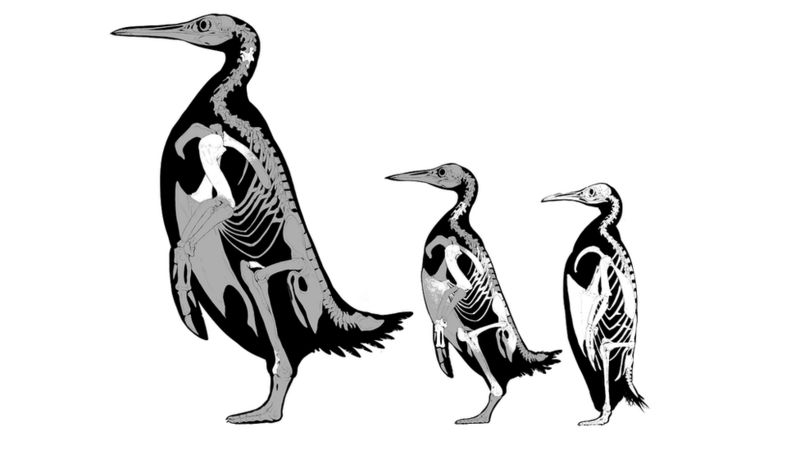
Scientists believe they have spotted the largest penguin that has ever lived on Earth.
They “christened” the largest penguin Kumimanu (a combination of the words “monster” and “bird” in the Maori language) fordycei, and the smallest Petradyptes (rock diver) – stonehousei.
By creating 3D models of the penguins’ huge wings and comparing them to the bones of their prehistoric and modern descendants, the researchers concluded that the “monster bird” weighed about 150 kg – three times more than the modern species.
Our team is delighted to announce two new fossil penguin species named after two legends in the area. Kumimanu fordycei pays tribute to Dr. R. Ewan Fordyce and Petradyptes stonehousei celebrate the legacy of the late Dr. Bernard Stonehouse.https://t.co/VDf5Z8i0JZ
— Daniel Ksepka (@KsepkaLab) February 8, 2023
These ancient birds, whose fossils were discovered by experts in New Zealand, are thought to have lived around 57 million years ago, just a few million years after the end of the dinosaur age.
great discovery
The fossils were found in coastal outcrops in North Otago, New Zealand’s South Island between 2016 and 2017.
An international team of scientists from the US, New Zealand and the University of Cambridge in the UK have used laser scanning to create digital bone models.
They then compared these models with fossils from other bird species such as moose and penguins.
To accurately estimate the size of this new species, scientists measured hundreds of bones from modern penguins, using their wing bone measurements to predict weight.

They were surprised by the result, as they found that the largest fin bones belonged to a penguin weighing 154 kg!
Its size is indicated by the size of the emperor penguin, the tallest and heaviest penguin on Earth, weighing between 22 and 45 kilograms.
On the other hand, the smallest species weighed around 50 kg.
“Kumimanu fordycei would have been an absolutely stunning sight on the beaches of New Zealand 57 million years ago, and the combination of its sheer size and the incomplete nature of the fossil record makes it one of the most interesting fossil birds ever found,” said Dr. Daniel Field of the University of Cambridge. .
Source: Kathimerini
Ashley Bailey is a talented author and journalist known for her writing on trending topics. Currently working at 247 news reel, she brings readers fresh perspectives on current issues. With her well-researched and thought-provoking articles, she captures the zeitgeist and stays ahead of the latest trends. Ashley’s writing is a must-read for anyone interested in staying up-to-date with the latest developments.